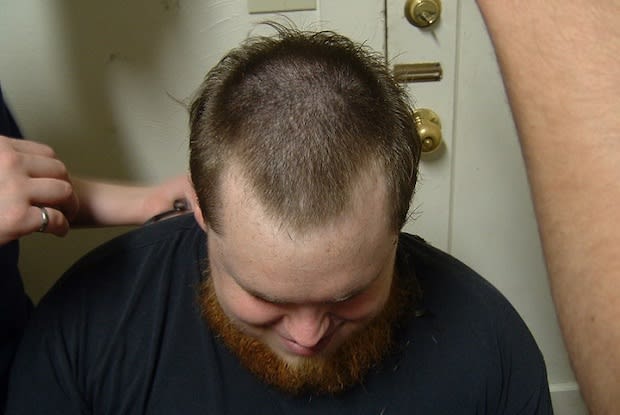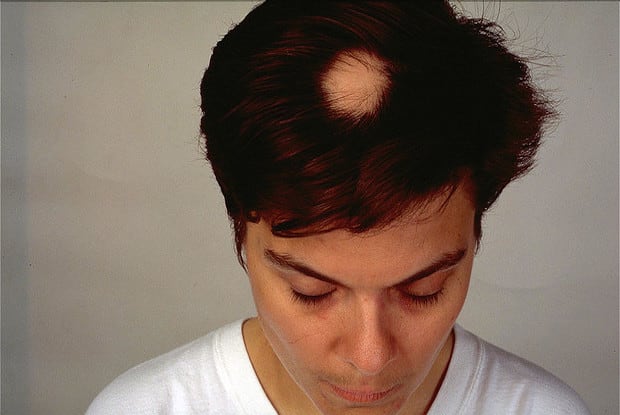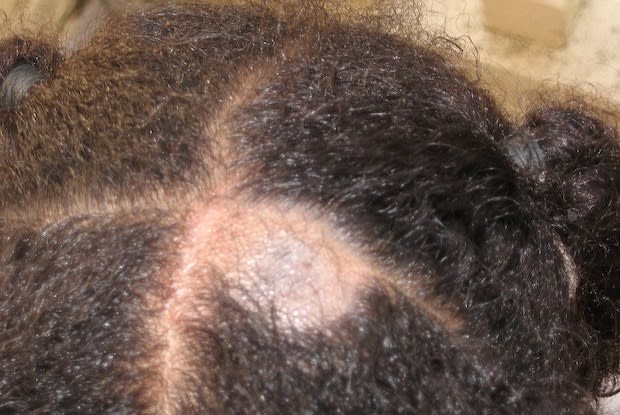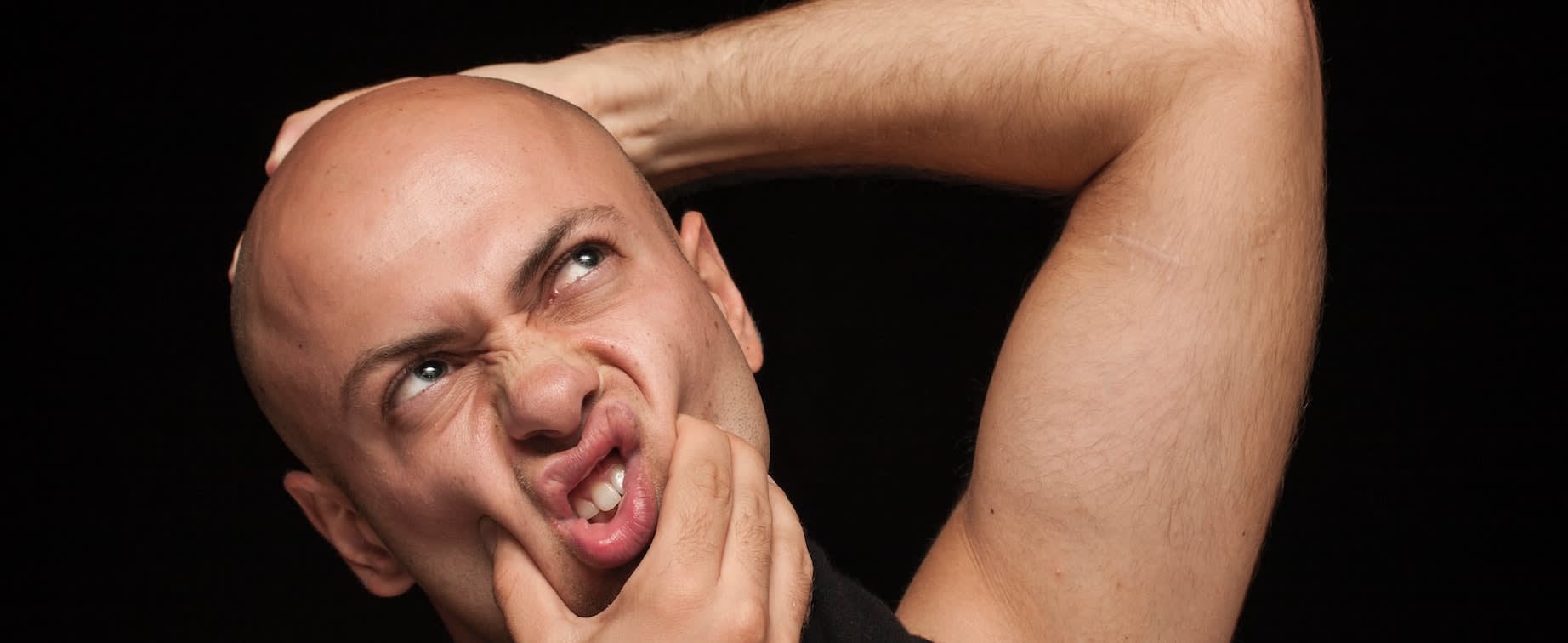Table of Contents
Hair Loss Overview
Hair loss is a condition, also called alopecia, that disrupts the body’s production of hair. The American Academy of Dermatology indicates that nearly 80 million men and women in the US have hereditary hair loss. [1] Hair loss can occur all over the body but most commonly affects the scalp.
There are three phases of hair growth. Hair generally cycles through phases of growing, resting, falling out, and regenerating. When hair loss occurs, often, the hair follicle is damaged, causing hair to fall out more quickly than it is regenerated. Hair loss can be a result of genetics, medical or behavioral conditions.
Androgenetic alopecia is the most common type of hair loss that affects more than 30 million women and 50 million men in the US. This type of hair loss also referred to as male-pattern hair loss or female-pattern hair loss, is hereditary but can be managed with proper treatment, such as Propecia. If your doctor has prescribed this medication you can order propecia online through RxConnected to save money. In male-pattern baldness, hair loss and thinning occur in an "M" shaped pattern on the crown of the head and temples. Hair loss can begin after puberty over many years. Many men with this type of hair loss eventually become bald. [2] Women who experience female-pattern hair loss have thinning in the front and central areas of the scalp, although the hairline usually doesn’t recede. Many women experience this type of hair loss due to the natural process of aging. Sometimes doctors aim to detect if female hair loss is because of conditions of hyperandrogenism, such as hirsutism, ovarian abnormalities, menstrual irregularities, acne, and infertility. [2] [3] Telogen effluvium occurs when the balance of hairs in the growth and rest phases is disrupted. This imbalance is due to larger than normal numbers of hair follicles on the scalp that have entered the resting phase of hair growth, called telogen. This causes hair to fall out continuously without any new hair growth. Although telogen effluvium does not usually lead to complete hair loss, 300 to 500 hairs may be lost per day around the crown and temples; this makes the hair appear thin. A specific dermatological test called a hair-pluck test shows that up to 50 percent of the hairs are in the telogen phase, as opposed to the normal 10 to 15 percent. Telogen effluvium is triggered by a number of different conditions or situations such as childbirth, surgery, thyroid imbalance, vitamin or mineral deficiency, medications, or the use of birth control pills. If as much as 80 percent of hairs are proven to be in the telogen phase, the doctor should look for causes such as toxic exposure, severe metabolic issues, or chemotherapy — this type of hair loss is often referred to as anagen effluvium [2] Alopecia areata is an autoimmune condition. The body's immune system attacks healthy hair follicles, causing a localized area of complete hair loss that may extend to the entire scalp, and in rare cases, the whole body. As hair falls out, new hair is prevented from growing. Hair loss can be sudden and without warning but is usually not painful. Eventually, other patches of hair, such as the eyelashes and eyebrows, may also fall out. Total hair loss is referred to as alopecia totalis. This condition affects 0.1 to 0.2 percent of the population, where women and men are equally affected. Thyroid abnormalities, vitiligo, and pernicious anemia frequently accompany this condition. Cicatricial alopecia, also known as scarring hair loss, is a rare disease characterized by a loss of hair accompanied by scarring. This type of skin condition is caused by inflammation that destroys the hair follicle. After destruction of the hair follicle, scar tissue forms, leading to irreversible hair loss. In cicatricial alopecia, there is likely stem-cell failure at the base of the hair follicles, which prevents them from recovering from the rest (telogen) phase. Symptoms may include itching, swelling, or rash-like lesions on the scalp. [2] [4] Types of Cicatricial Alopecia include: Lichen Planopilaris: A kind of alopecia, also called lichen planus. This skin condition is a rare inflammatory autoimmune skin and mucous membrane disease that commonly causes itchy, shiny, dry, flaky lesions on the skin. The scalp may become red, irritated, and covered in small painful bumps. As a result, the hair on the scalp falls out in clumps. [5] Discoid Lupus Erythematosus: An autoimmune disease-causing inflamed sores that can cause scarring of the ears, scalp, and face. The lesions present as red, inflamed patches with a crusty appearance. As scar tissue forms on the scalp, hair loss occurs. [6] Folliculitis Decalvans: Another inflammatory disorder that leads to the destruction of hair follicles. The symptoms of this condition include redness, swelling, and lesions or pustules on the scalp. Dissecting Cellulitis of the Scalp: A rare condition characterized by lumps or pustules on the scalp. Scar tissue develops, destroying hair follicles and causing hair loss. [3] Frontal Fibrosing Alopecia: This condition is characterized by slowly progressive hair loss and scarring on the scalp along a receding hairline. Hair loss may occur in the eyebrows, eyelashes, and underarms as well. This condition most commonly affects postmenopausal women. [7] Central Centrifugal Cicatricial Alopecia: This can occur as a result of styling techniques or hair products that damage hair follicles. The use of things such as blow dryers, curling irons, hair relaxers, hair extensions, oils, gels, or hair spray can cause damage. Tinea Capitis is a fungal infection, also called scalp ringworm. It is caused by a species of fungi called dermatophytes, specifically microsporum and trichophyton. This condition causes hair to fall out in patches and is a common cause of hair loss in children. Symptoms of the condition include swollen glands in the back of the neck or low-grade fever; this is due to the immune system fighting off infection. Tinea capitis can result in increased hair loss accompanied by frequent breakage of hairs. [2] [3] Trichotillomania is considered a psychiatric impulse-control disorder. It is the most common cause of alopecia in children. In trichotillomania, people pull their hair out and find it challenging to stop the habit. The result is hair loss on the scalp or other places on the body. The hair can grow back if the plucking stops, but if the pulling continues over the long term, the hair loss may become permanent. Hypotrichosis is a rare condition whereby there is little to no hair growth on the head, including the eyebrows, eyelids, and other areas of the body. Traction alopecia involves unintentional hair loss due to hairstyles. Hairstyles such as tight braids and ponytails can cause breakage of the hairs or cause loss of hair around the hairline. Unless the hairstyles are changed, the hair will continue to be damaged, become thinner, or fall out. The content in this article is intended for informational purposes only. This website does not provide medical advice. In all circumstances, you should always seek the advice of your physician and/or other qualified health professionals(s) for drug, medical condition, or treatment advice. The content provided on this website is not a substitute for professional medical advice, diagnosis or treatment.
Androgenetic Alopecia
Male Pattern Hair Loss

Female Pattern Hair Loss
Telogen Effluvium
Alopecia Areata

Cicatricial Alopecia
Tinea Capitis

Trichotillomania
Hypotrichosis
Traction Alopecia


